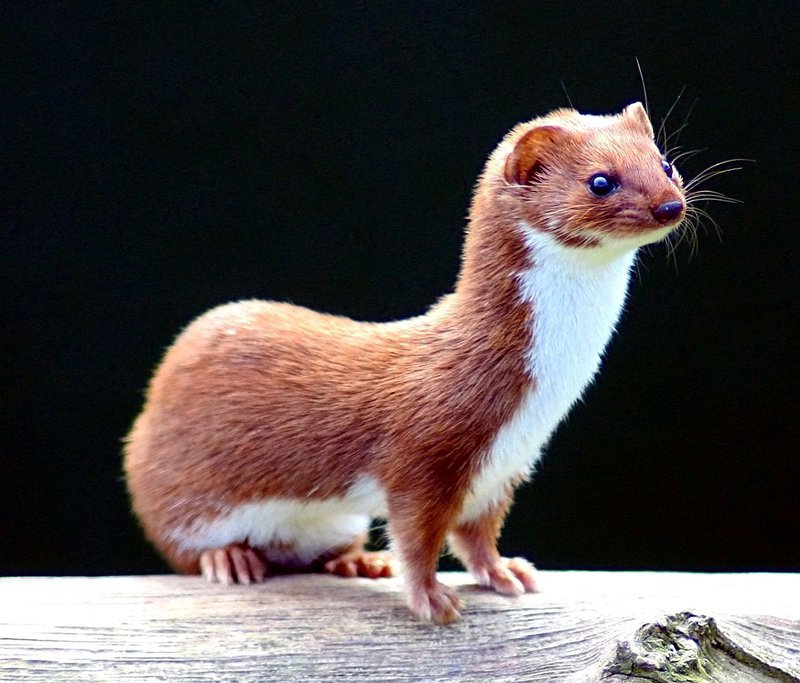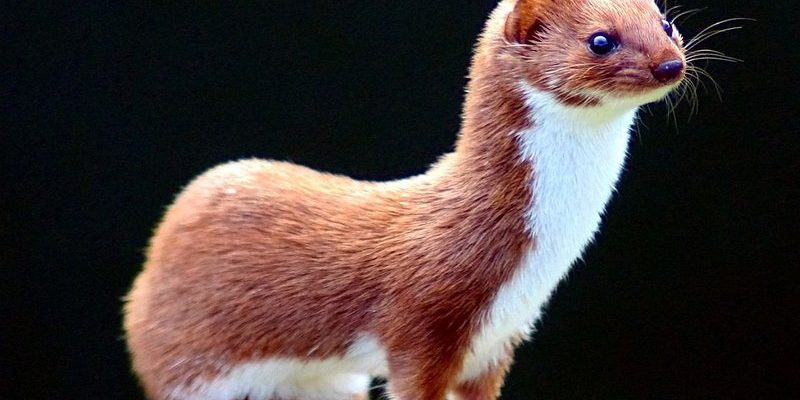
Imagine a weasel as the ultimate survival expert, packed into a small, agile body. They are known for their speed, cunning, and adaptability. Whether they’re racing through fields or climbing into tree branches, weasels have a lot to offer in terms of interesting facts and behaviors. So, let’s dive into the world of weasels and uncover ten fascinating facts that will make you appreciate these unique creatures even more!
1. Weasels Come in Different Species
There’s not just one type of weasel, but several! In fact, there are around 17 species of weasels around the world. Each species has its unique traits and adaptations that help them thrive in various environments. For example, the **short-tailed weasel**, also known as the stoat, is famous for its winter coat that turns white, helping it blend in with the snowy landscapes.
You might be wondering about their sizes. Weasels vary greatly, with some species measuring just 6 inches long, while others can reach up to 24 inches. Isn’t it amazing how diversity in size can occur in such a small family? Each species occupies different habitats, from forests to grasslands and even urban areas. So, depending on where you live, you might come across different kinds of weasels without even realizing it!
2. They Are Remarkably Quick
One of the most impressive facts about weasels is their speed. These little critters can run up to 10 miles per hour. To put that in perspective, think about how quickly a football player dashes down the field. Weasels can dart in and out of their burrows or stalk their prey with incredible agility. They use their quickness to catch small mammals like mice and rabbits, which are an essential part of their diet.
Here’s the thing: their speed is not just for hunting. It’s also a means of escape. If a predator gets too close, a weasel can effortlessly slip away, darting under bushes or into the nearest hole it can find. This quick reflex is essential for survival, making them both fierce hunters and clever escape artists.
3. They Have Unique Hunting Techniques
Weasels are not just fast; they also have some clever hunting tricks up their furry sleeves. One of their most fascinating techniques involves **stalking** and **pouncing**. They tend to sneak up on their prey quietly, using their low profile to get close without being noticed. Once they’re within striking distance, they make a quick leap to catch their meal.
But wait, there’s even more! Weasels have been observed engaging in a behavior called **”play fighting.”** Young weasels will wrestle with each other, practicing their hunting skills and building strength. This playful behavior isn’t just for fun; it’s training for when they need to catch food or defend themselves in the wild. Isn’t it great to see that even in the animal kingdom, play has a purpose?
4. They’re Fierce Predators
Let’s talk about their reputation for being fierce. Weasels are often labeled as small but mighty, and it’s true! They have sharp teeth and a strong bite, allowing them to take down prey larger than themselves. Don’t let their size fool you; a weasel can tackle animals that are several times its weight.
For example, the **European polecat**, a type of weasel, has been known to hunt animals much larger than it. They use stealth and their fierce determination to succeed. And in times of scarcity, weasels will not hesitate to scavenge, showcasing their versatility as hunters. This adaptability is what makes them such successful survivors in various environments.
5. Weasels Have an Impressive Sense of Smell
Have you ever thought about how animals find their food? For weasels, a great sense of smell is essential. They rely heavily on their noses to locate prey, often sniffing out small mammals hidden in grass or burrows. It’s like having a superpower of scent!
Their smell isn’t just useful for hunting. It helps them communicate with each other, marking their territory or signaling to other weasels. You might think of it as their personal way of sending messages, almost like texting, but in the animal world. This keen sense makes weasels both talented hunters and skilled navigators of their environment.
6. They Can Change Their Fur Color
Weasels are known for their seasonal fur changes, which is quite the fashion statement in the animal world! Some species, like the stoat, change their fur from brown in the summer to white in winter. This adaptation helps them blend into their snowy surroundings, making them less visible to predators and easier to hunt.
Imagine being able to change your outfit based on the season! This camouflage is essential for their survival, allowing them to stay hidden from both prey and threats. So, if you see a white weasel frolicking in the snow, remember, it’s not just stylish; it’s also smart!
7. Weasels Have a Unique Social Structure
While many small mammals prefer solitary lives, weasels are a bit different. They can be social, especially when it comes to raising their young. Female weasels often create nests where they give birth and care for their kits. These family units allow young weasels to learn the ropes of survival together.
Interestingly, while they can be social, weasels are also known to be territorial. They establish areas where they hunt and play. Think of it as claiming your favorite spot in a park! This combination of social structure and territoriality helps them balance bonding with family while ensuring they have enough resources.
8. They’re Not Just Cute; They’re Essential to Ecosystems
You might think weasels are just adorable creatures scampering around, but they play a significant role in their ecosystems. As predators, they help control populations of small mammals, which, if left unchecked, could lead to overpopulation and damage to plants.
By keeping prey populations in check, weasels contribute to a balanced ecosystem. It’s a bit like being a vital part of a team, where every player (or animal) has a role to ensure everything runs smoothly. So, the next time you hear about weasels, remember—they’re not just charming; they’re essential players in nature!
9. They Have a Long History in Culture and Folklore
Weasels have been part of human culture for centuries! Many cultures view these creatures as symbols of agility, cunning, and intelligence. In ancient Rome, weasels were often associated with good luck. In various folktales, they’re depicted as clever tricksters, much like foxes.
This cultural significance extends to literature and art, where they are often portrayed in ways that reflect their clever nature. Have you ever seen cartoons where a weasel plays a sneaky character? That portrayal stems from their real-life behaviors, cleverly weaving them into our storytelling.
10. Weasels Are Adaptable Survivors
Lastly, let’s celebrate the weasel’s adaptability. They thrive in many environments, from forests and fields to urban settings. This ability to adjust to different habitats shows just how resilient they are.
If a weasel’s preferred environment changes due to climate or human activity, they can often find new places to live and hunt. This resilience is truly inspiring, reminding us that survival sometimes requires flexibility and creativity.
In summary, weasels are more than just quick and quirky animals. They are fascinating creatures with a rich history, impressive adaptations, and vital roles in their ecosystems. So, the next time you hear someone mention weasels, you’ll have plenty of fascinating facts to share!

